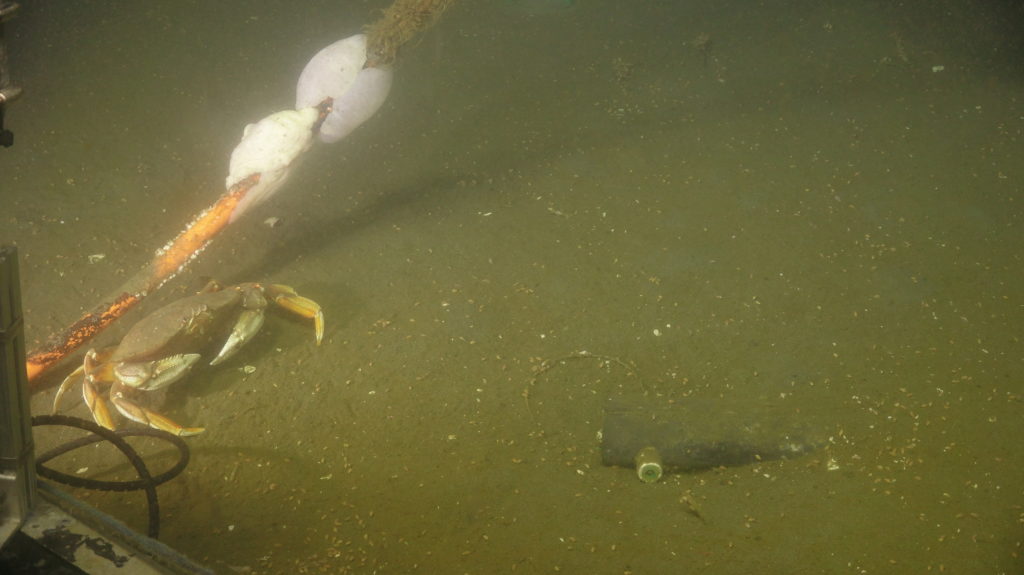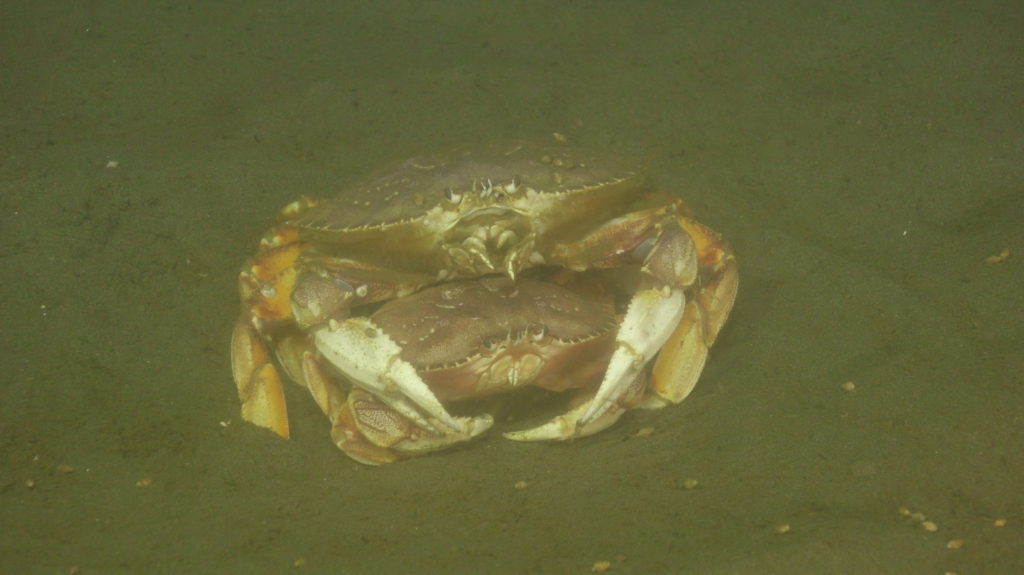Dungeness crabs (Metacarcinus magister)
Dungeness crabs are frequently seen at the Oregon Shelf site (80 m depth) and occasionally at Oregon Offshore (600 m). They are a common shallow-water, sandy bottom species found from the Aleutian Islands as far south as Point Conception, CA.
Dungeness crabs have four pairs of relatively short legs, two hooked claws, and a broad, thick shell. They use their claws in defense and to process prey and scavenged food items, like clams, other crustaceans, and small fish. The smaller appendages then pass the food particles into its mouth. Dungeness crabs can live from five to eight years, sometimes as much as thirteen years in the northern extent of their range. Females can grow up to seven inches in width, while males can be as large as nine inches across.
Genetic analyses by Jackson et al. (2018) of adult Dungeness crabs indicated that all of the individuals across the California Current System belong to a single population. However, variation in circulation patterns and other physical factors can influence regional recruitment of larvae, which could cause genetic diversification over time. There is a large, active fishery for Dungeness crabs, although it has been frequently closed in various regions due to population decreases following environmental shifts, hypoxic (low oxygen) events, and increased competition from otters and other natural predators.
Reference:
https://en.wikipedia.org/wiki/Dungeness_crab
Jackson, Tyler M.; Roegner, G. Curtis; O’Malley, Kathleen G. (2018). Evidence for interannual variation in genetic structure of Dungeness crab (Cancer magister) along the California Current System. Molecular Ecology. 27 (2): 352–368. doi:10.1111/mec.14443.





